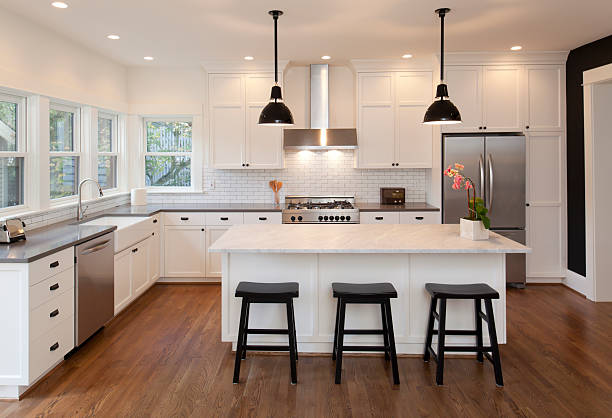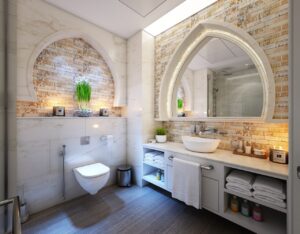The proper lighting can make all the difference, whether you’re looking to light up a room or updating your decor. Determining the type of lighting you need before installing any fixtures is essential. Ambient lighting is often used to illuminate a space for general purposes, whereas task lighting is focused on a particular area. Accent lighting can highlight specific areas and act as a decorative feature. Pendants are an excellent choice for the kitchen because they can be used for various lighting requirements.
Pendant lights for the kitchen are often hung above an island or sink. They add a touch of brilliance to a room and can be aesthetically pleasing. The lights can direct light toward prep surfaces, highlight a contrasting color or finish and define the room’s focal point. They also contribute to the overall brightness of the kitchen. Learn about the different styles of kitchen pendant lighting and how to utilize them with our guide.
Kitchen Pendant Lighting Styles
Pendants are suspended from the ceiling and illuminate rooms from above. They come in many shapes, sizes, and styles. Many charms have drums or shades made from glass, metal, fabrics, etc., to help direct and filter light. They are a significant feature in the room, so you should choose a design that matches your decor. Pendants in glass or chrome are often sleek and modern. Fixtures that have woven shades are often associated with boho and coastal styles. Farmhouse kitchens look great with exposed bulbs or industrial-style metal shades. Remember that many lighting showrooms will allow you to customize the fixtures when looking for pendants that match your lighting style.
Choose a Kitchen Pendant Lighting
Choose a pendant with an open top, such as a drum shade, to diffuse the light. Translucent shades can reduce glare, while opaque shades provide a more subtle glow. Consider a pendant with a light diffusing shade or semi-opaque light bulbs to avoid bright circles.
If you want a general light, place pendants evenly around the room. Hang a charm with three or more lights or cluster small pendants over a kitchen island or dining table. The larger the area you wish to illuminate, the larger your pendant light should be. Over a desk or sink, a small pendant is sufficient. But you will need a larger one (or a series of pendants) over an island.
How to Hang a Kitchen Pendant Lighting
Installation is a significant factor that should be considered. Pendants should be hung 12 to 20 inches beneath an 8-foot ceiling. Add three inches for each foot of additional ceiling height. In a kitchen with a ceiling height of 9 feet, the pendant would hang between 15 and 23 inches below.
You can also measure the height of the pendant by measuring up from whatever surface you plan to illuminate. To get the best task lighting height, allow a 30 to 36-inch clearance above counters and tables. Also, adjust the length of the chain to suit your needs. Pendants should be hung over the work surface at a level that does not block your view of other areas in the kitchen.
Kitchen Pendant Lighting Features
Consider features that will help you choose pendant lighting that is more suitable for your needs. For example, pendant fixtures with retractable cords (168, Wayfair) are easily adjustable and can be used to meet different lighting needs. You can retract the light to diffuse it or pull it closer for an intimate dining experience.
Choose the lightbulb that is best suited to the purpose of your pendant. The color and intensity of the lighting will affect the mood in the kitchen, and its effectiveness, regardless of whether it is for ambient, task, or accent lighting. Dimmable Bulbs ($15 per four-pack Target) can change a light’s brightness to suit a particular project or mood. These energy-efficient, long-lasting bulbs come in a variety of styles. Some even have intelligent features that let you control the brightness and temperature with your voice or phone.


